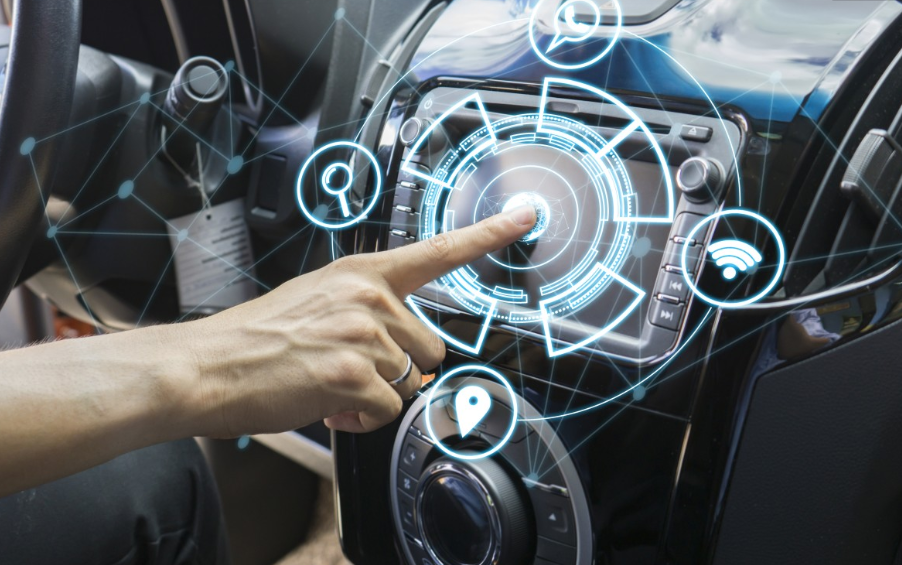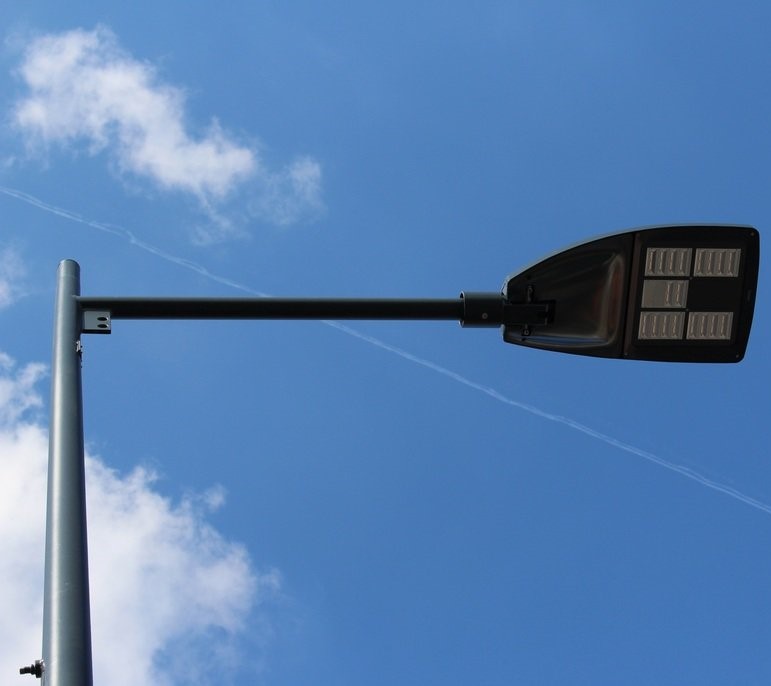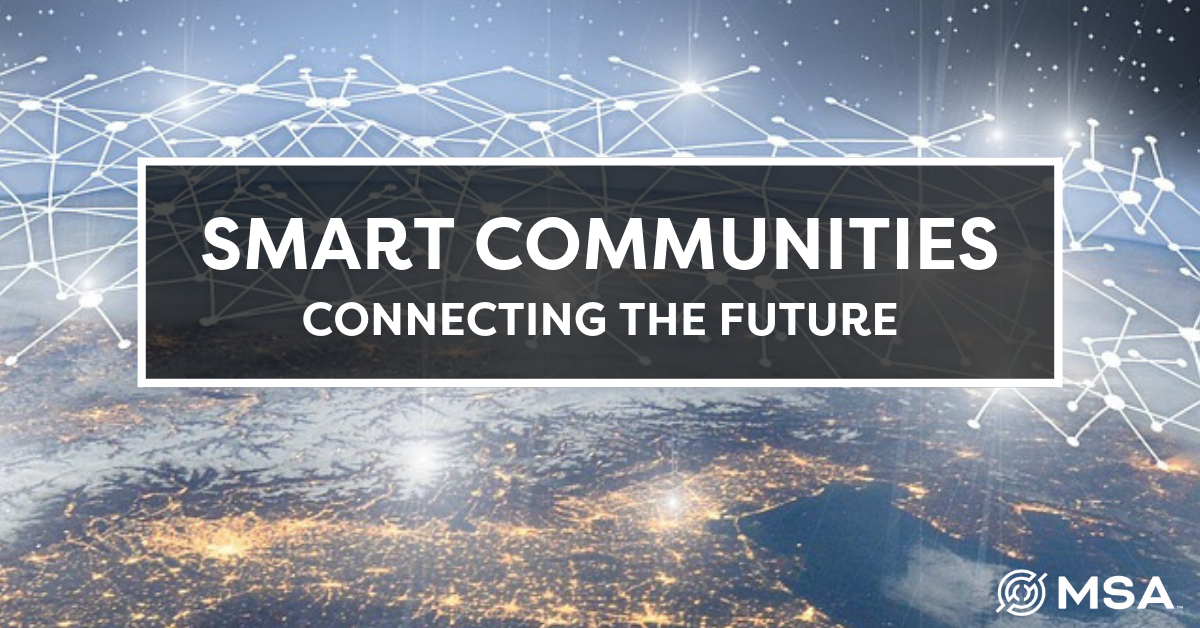“Smart city,” “connected and autonomous vehicles” and “big data” all are exciting buzzwords that summon memories of The Jetsons and flying cars, and spur the imagination toward the possibility of safely multitasking while commuting to work. While I’m not sure if we will ever have flying cars, I am certain the reality of getting a jump on the work day or maybe even catching a few extra “Zzzs” on the way home from a late-night meeting is closer than you may think through the evolution of efficient, smart transit, increased ride sharing—and eventually—semi-autonomous and autonomous vehicles.

Building a smart community or smart city is more than just a pile of data and connected vehicles that drive themselves. Building a smart city is about collecting and using data to improve public safety, reduce energy consumption and provide more responsive traffic management. A connected city can help create efficiencies with day-to-day operations like monitoring city infrastructure: sewage treatment plants, well houses, and street light energy consumption. It means having sensors that relay real-time pavement conditions for snowplow routing and track traffic congestion to prioritize traffic signals. It is also about improving equity through reliable and affordable payment and mobility options that connect all people from their doorstep to their final destination.
Having a smart community is more than just an idea; it’s going to directly impact our way of life.
Where do things currently sit across the country?

U.S. 24 / Ute Pass between Woodland Park and Colorado Springs
The USDOT has taken an active role in testing different ideas through a number of pilot projects around the country including the Smart City Challenge (won by, and currently underway, in Columbus, Ohio) and Connected Vehicle pilot projects in New York City, Tampa, and along a heavy trucking corridor in Wyoming. However, the USDOT is not alone. A number of state DOTs and larger cities have also taken their own steps to try to prepare for the future through a series of infrastructure improvements and smaller test corridors.
- The Colorado DOT is actively constructing 17 miles of fiber-optic cable along US 24 as part of a Smart Mobility Corridor. This is a portion of a statewide 5- to 10-year technology deployment initiative.

State Street in Madison
- Despite not winning the Smart City Challenge, the City of Madison, Wisconsin, is moving forward as funding allows with goals outlined within their application, including: expanding their fiber-optic cable network, establishing adaptive corridors on primary arterials, creating a city-owned, citywide 5G network and an open-sourced Shared Madison Data Platform.
The biggest challenge facing these current and future projects is the pace and direction that evolving technology will eventually take. No one knows for certain whether technology implemented today will still be viable in 5 years or 25 years. It is generally accepted that there will be a need for densely spaced devices mounted within our communities to handle dedicated short-range communications (DSRC) from vehicle-to-infrastructure (V2I) and vehicle-to-vehicle (V2V). However, while some of those mountable devices currently exist, there is not a consistent set of standards to ensure all devices communicate with one another. This is also the case in the auto industry where automakers are testing out different DSRC technologies within vehicles. However, until a communication protocol can be agreed to, there is no guarantee these technologies will communicate across brands.
With no timetable or clear path for this technology yet, the Federal Highway Administration (FHWA) has elected to take a relative step back and let the technology evolve without forcing the industry in one particular direction. This creates innovation, competition and hopefully future reliability, but it also leaves many unknowns. Combined with the reality that communities continue to have limited public funding, there has been some reluctance from many communities to jump in and fund full-scale pilot projects.
With so many unknowns, what do we know right now?
When it comes to building a smart community, municipalities can confidently take the first steps by creating a network communications plan and building a fiber-optic network.
Regardless of where the technology lands, it will always need a secure and reliable path to transmit the data. Across the industry, fiber-optic cable is identified as the preferred method for connecting all devices. 4G and 5G have the capability to transmit data over short distances, but the sheer volume of devices and data present may be too much to rely exclusively on wireless technology. It’s more likely that wireless technology will be used to relay smaller amounts of data from remote locations to areas where the data can be retrieved and connected to a fiber network.
How do we get started?
The best thing your community can do to begin planning a smarter future is to identify goals for connecting the community’s resources and infrastructure, and develop a plan for building out a fiber-optic backbone network. As you begin, ask yourself these questions:
- What kind of growth do we anticipate in the next 20 years?
- Where will the growth occur, and how much will there be?
- What intersection upgrades may be needed?
- How do people currently get from Point A to Point B and how might that change or be improved in the future?
- What’s the status of public transportation within the community and how can that be made more efficient/appealing to a wider population?
- What kinds of everyday tasks would be easier if they could be completed from a centralized location? (e.g. asset management: water usage monitoring for leaks, pavement sensors for snow plowing, traffic signal monitoring, etc.)
- Are there areas your community would like to monitor for public safety or general security measures where camera installation could be beneficial?
One of the more effective ways to obtain approval for capital projects is to show a return on investment.

- Are there areas to cut costs through energy savings? One example of this is smart street lighting. Implementing a two-part project that converts existing street lights from High Pressure Sodium (HPS) to Light Emitting Diode (LED) and connects street lights with fiber-optic cable for monitoring of energy output can save communities on energy costs while also working to building a fiber network that can be used in the future for potential mounting of DSRC radios.
Creating a plan that looks for these returns on investment opportunities is a great first step to gain community traction while also being realistic about costs and timelines. It is not critical that all fiber gets installed immediately. Focus on main arterials as the primary location for your backbone network. If your community has planned upcoming roadway improvement or reconstruction projects, work those into your overall network build-out plan. Consider adding a conduit and a line of fiber for the length of that already planned project. Fiber does not degrade so it can be connected to other locations at a future date, but installation when the roadway is already under construction can save thousands of dollars over a stand-alone fiber install project. Continue to look for these cost-saving opportunities to get your plan off the ground a little at a time.
Whether your community is aspiring to be a leader on the smart community frontier, or is just focused on finding a way to pay for repairs of that pothole on the corner of Main and First, this technology is coming. Now is the time to begin planning for the future, knowing that some questions will take time to resolve. If your community is ready and looking for guidance on creating a plan for its future, MSA would love to sit down with you and get started. Give us a call.

This blog post is the first in a short series focused on Smart Communities: Connecting the Future.
In Part II, we address asset protection and the creation of policy that works. We discuss the importance of taking inventory of existing community infrastructure assets, considering asset ownership, and putting policies in place regarding city-owned real estate and big data collection, usage and retention.
Part III – Creating Partnerships discusses how to identify key partners for your community’s smart initiatives. The goals of these stakeholders commonly overlap with yours and are vital to project support–politically, financially and developmentally. Learn who potential internal, external and private partners are, and how to kick-start those relationships to get your smart projects off the ground.
